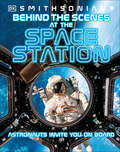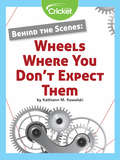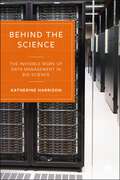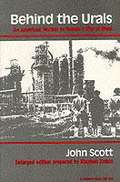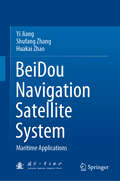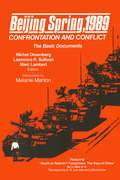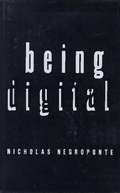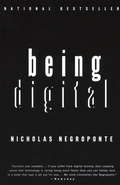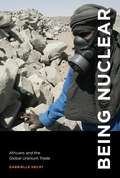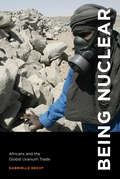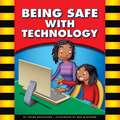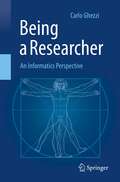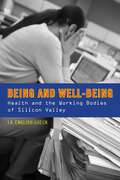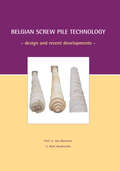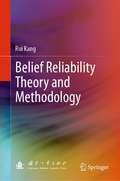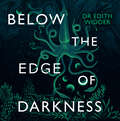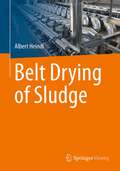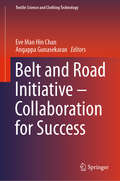- Table View
- List View
Behind the Scenes at the Space Stations: Your All Access Guide to the World's Most Amazing Space Station (DK Behind the Scenes)
by DKYour all-access pass to spectacular space stations. Step inside one of humanity&’s greatest achievements with a behind-the-scenes guide to space exploration. Revealing a new perspective into the world of space exploration and the daring astronauts who make it possible, Behind the Scenes at the Space Station takes you on a once-in-a-lifetime tour of the space station. Learn what the astronauts do once they make it to the space station, from experiments to repairs and so much more! Have you ever wondered if plants can grow in outer space? Or how the space station doesn&’t break down in outer space? Or how astronauts go to the toilet in zero gravity? Behind the Scenes at the Space Station is a treasure trove of information. Did you know that during a 24-hour period, the space station completes 16 orbits of Earth and the astronauts on board see 16 sunrises and sunsets everyday? Or that the International Space Station is so enormous that it was launched in pieces and constructed in orbit? Brimming with astonishing visuals, step-by-step explanations of everyday space work in action, and job profiles of the adventurous people who make it happen, Behind the Scenes at the Space Station is the perfect way to experience life in space.
Behind the Scenes: Wheels Where You Don't Expect Them
by Kathiann M. KowalskiCars, wagons, and other vehicles aren't the only places you'll find wheels . . . Be on the lookout for these and other working wheels.
Behind the Science: The Invisible Work of Data Management in Big Science
by Katherine HarrisonAvailable Open Access digitally under CC-BY-NC-ND licence. Some of the largest quantities of data produced today occur as the result of experiments taking place at Big Science facilities. This book tells the story of a unique research journey following the people responsible for designing and implementing data management at a new Big Science facility, the European Spallation Source (ESS) in Lund, Sweden. It critically examines the idea of data as an absolute ‘truth’ and sheds light on the often underestimated, yet essential, contributions of these data experts. Providing a unique glimpse into the inner workings of Big Science, this book fills an important gap in science and technology studies and critical data studies.
Behind the Urals: An American Worker in Russia's City of Steel
by John ScottGeneral readers, students, and specialists alike will find much of relevance for understanding today’s Soviet Union in this new edition of John Scott’s vivid exploration of daily life in the formative days of Stalinism.
BeiDou Navigation Satellite System: Maritime Applications
by Yi Jiang Shufang Zhang Huakai ZhaoThis book highlights the maritime applications of Global Navigation Satellite Systems (GNSSs) with emphasis on BeiDou Navigation Satellite System (BDS). The book systematically summarizes the technical standards for maritime applications of GNSS issued by the International Maritime Organization (IMO), the International Telecommunication Union (ITU), and other relevant international organizations. It covers the development history and future prospects of the international standardization of BDS’ maritime applications. Various applications of BDS in maritime navigation, including the radio determination service system, the global maritime distress and safety system, the automatic identification system, the vessel monitoring system, the long-range identification and tracking system, and the maritime ground-based augmentation system, are introduced. Promising new directions are put forward. This book is intended for technical engineers in maritime communication and navigation. It is also a valuable reference for researchers, graduate students, and upper-level undergraduate students in maritime-related majors.
Beijing Spring 1989: Confrontation and Conflict - The Basic Documents
by Melanie Manion Michel C. Oksenberg Marc LambertA collection of documents, with commentary, which trace the day-to-day pronouncements, utterances, and reflections from all sides of the conflict in China in the spring of 1989. The 65 documents are arranged chronologically, starting in early March and ending in late June.
Being Digital
by Nicholas NegroponteA Professor of MIT and former director of its Media lab expounds on his philosophy and opinions of the digital world.
Being Digital
by Nicholas NegroponteIn lively, mordantly witty prose, Negroponte decodes the mysteries--and debunks the hype--surrounding bandwidth, multimedia, virtual reality, and the Internet, and explains why such touted innovations as the fax and the CD-ROM are likely to go the way of the BetaMax. "Succinct and readable. . . . If you suffer from digital anxiety . . . here is a book that lays it all out for you."--Newsday.
Being Nuclear
by Gabrielle HechtUranium from Africa has long been a major source of fuel for nuclear power and atomic weapons, including the bomb dropped on Hiroshima. In 2002, George W. Bush claimed that Saddam Hussein had "sought significant quantities of uranium from Africa" (later specified as the infamous "yellowcake from Niger"). Africa suddenly became notorious as a source of uranium, a component of nuclear weapons. But did that admit Niger, or any of Africa's other uranium-producing countries, to the select society of nuclear states? Does uranium itself count as a nuclear thing? In this book, Gabrielle Hecht lucidly probes the question of what it means for something--a state, an object, an industry, a workplace--to be "nuclear. " Hecht shows that questions about being nuclear--a state that she calls "nuclearity"--lie at the heart of today's global nuclear order and the relationships between "developing nations" (often former colonies) and "nuclear powers" (often former colonizers). Nuclearity, she says, is not a straightforward scientific classification but a contested technopolitical one. Hecht follows uranium's path out of Africa and describes the invention of the global uranium market. She then enters African nuclear worlds, focusing on miners and the occupational hazard of radiation exposure. Could a mine be a nuclear workplace if (as in some South African mines) its radiation levels went undetected and unmeasured? With this book, Hecht is the first to put Africa in the nuclear world, and the nuclear world in Africa. Doing so, she remakes our understanding of the nuclear age.
Being Nuclear: Africans and the Global Uranium Trade (The\mit Press Ser.)
by Gabrielle HechtThe hidden history of African uranium and what it means—for a state, an object, an industry, a workplace—to be “nuclear.”Uranium from Africa has long been a major source of fuel for nuclear power and atomic weapons, including the bomb dropped on Hiroshima. In 2003, after the infamous “yellow cake from Niger,” Africa suddenly became notorious as a source of uranium, a component of nuclear weapons. But did that admit Niger, or any of Africa's other uranium-producing countries, to the select society of nuclear states? Does uranium itself count as a nuclear thing? In this book, Gabrielle Hecht lucidly probes the question of what it means for something—a state, an object, an industry, a workplace—to be “nuclear.” Hecht shows that questions about being nuclear—a state that she calls “nuclearity”—lie at the heart of today's global nuclear order and the relationships between “developing nations” (often former colonies) and “nuclear powers” (often former colonizers). Hecht enters African nuclear worlds, focusing on miners and the occupational hazard of radiation exposure. Could a mine be a nuclear workplace if (as in some South African mines) its radiation levels went undetected and unmeasured? With this book, Hecht is the first to put Africa in the nuclear world, and the nuclear world in Africa. By doing so, she remakes our understanding of the nuclear age.
Being Safe at School
by Susan KesselringThis fun book describes basic rules for what to do and what not to do to be safe at school. Includes SCHOOL SAFETY RULES TO REMEMBER.
Being Safe on Wheels
by Susan KesselringThis fun book describes basic rules for what to do and what not to do to be safe on wheels.
Being Safe with Technology
by Susan KesselringThis fun, colorful book describes basic rules for what to do and what not to do to be safe on your phone and online. Other books in this series are available in this library.
Being a Bee
by Jinny JohnsonBuzz into Being a Bee to discover more about this incredible insect.Buzzing from flower to flower, and making delicious honey to eat, bees have endless child appeal. But there's even more to bees than meets the eye... Buzz into Being a Bee to discover more about this incredible insect. Children will love learning about life in the hive, bee families, and how older bees work together to look after and raise baby bees. They can find out about beekeeping, how and why bees make honey, and how they dance to communicate with other bees.The book also gently introduces children to the idea of conservation - explaining why bees are in danger, the need to protect them, and all the ways we can help, from planting wild flowers to buying local honey. Gentle engaging text, and bright, captivating artwork will ensure children finish the book as bee experts!
Being a Researcher: An Informatics Perspective
by Carlo GhezziThis book explores research from the researchers’ perspective: why to engage in research, what methods to follow, how to operate in daily life, what the responsibilities are, how to engage with society, and the ethical issues confronting professionals in their day-to-day research. The book systematically discusses what every student should be told when entering academic or industrial research so that they can avoid going through the painful process of learning by personal experience and lots of errors. Rather than being technical, it is philosophical and sometimes even anecdotal, combining factual information and commonly accepted knowledge on research and its methods, while at the same time clearly distinguishing between objective and factual concepts and data, and subjective considerations. The book is about scientific research in general and as such holds true for any scientific field. However, it is fair to say that the different fields differ in their research cultures and in their eco-systems. The book reflects the author’s experience accumulated over almost 50 years of teaching graduate courses and lecturing in doctoral symposia at Politecnico di Milano, University of Zurich, TU Wien, Peking University, and at various conferences, and of academic research in informatics (also known as computer science). This book is mainly intended for students who are considering research as a possible career option; for in-progress researchers who have entered doctoral programs; and for junior postdoctoral researchers. It will also appeal to senior researchers involved in mentoring students and junior researchers.
Being and Well-Being: Health and the Working Bodies of Silicon Valley
by J. A. English-LueckEnglish-Lueck (anthropology, San Jose State U.) explores the relation between health and the workplace in this volume based largely on extensive studies of personal health behavior in Santa Clara Valley. Much of the text consists of observations, as well as direct quotes from individual workers. Alternative healing practices, often coming from Chinese and Japanese traditions, are included. Annotation ©2011 Book News, Inc., Portland, OR (booknews.com)
Belgian Screw Pile Technology: Proceedings of the Symposium, May 7 2003, Brussels, Belgium
by Prof. Ir. Jan Maertens, Ir. Noël HuybrechtsThis volume provides an overview of the results of an extended test campaign performed on soil displacement screw piles at Limelett in Belgium in the period 2000-2002, where test piles have been installed to a very dense sand layer.
Belief Reliability Theory and Methodology
by Rui KangThis book, from the perspective of reliability science construction, proposes a new theory called BELIEF RELIABILITY theory on the basis of probability theory, uncertainty theory and chance theory. The main topics include the philosophical basis of reliability science, the principles of reliability science, the criteria of reasonable reliability metrics and the basic theoretical framework and methodology of belief reliability theory. In this book, the belief reliability metric, analysis, design and evaluation methods will provide readers with a brand-new perspective on reliability applications and uncertainty quantification.
Believe Me: The twisty and addictive follow-up to the bestselling The Girl Before
by JP DelaneyIn this twisty psychological thriller from the New York Times and Sunday Times bestselling author of The Girl Before, an actress plays both sides of a murder investigationOne aspiring actress from the UK pays for her acting class in New York the only way she can: as a decoy for a firm of divorce lawyers, hired to entrap straying husbands. When the police begin investigating one of her targets for murdering his wife - and potentially others - they ask her to help lure the suspect into a confession.But with the actress pretending to be someone she's not, differentiating the decoy from the prey becomes impossible - and deadly.**********See what everyone is saying about JP Delaney, the hottest new name in psychological thrillers:'An outstanding debut that is more than a match for Paula Hawkins's The Girl on the Train' Sunday TimesDazzling - a pitch-perfect thriller (Lee Child)Slick, sexy, suspenseful and smart (Mail on Sunday)(P)2018 Quercus Editions Limited
Believe Me: The twisty and addictive thriller from bestselling author of The Girl Before
by JP Delaney'Imaginative, unusual, clever and fun' Sunday Times'A twisty, exciting read' Sabine Durrant'A dark, sexy mystery' MetroClaire Wright isn't who she seems.A British drama student, in New York without a green card, Claire takes the only job she can get: working for a firm of divorce lawyers, posing as an easy pick-up in hotel bars to entrap straying husbands.When one of her targets becomes the subject of a murder investigation, the police ask Claire to use her acting skills to help lure their suspect into a confession. But right from the start, she has doubts about the part she's being asked to play. Is Patrick Fogler really a killer . . . Or the only decent husband she's ever met? And is there more to this set-up than she's being told?And that's when Claire realises she's playing the deadliest role of her life . . .Readers are LOVING JP Delaney's Believe Me'A fantastic read by a fantastic author' ⭐⭐⭐⭐⭐'So many twists and turns' ⭐⭐⭐⭐⭐'Kept me guessing right to the end' ⭐⭐⭐⭐⭐'Very, very addictive' ⭐⭐⭐⭐⭐'One of the best books I've ever read' ⭐⭐⭐⭐⭐See what everyone is saying about JP Delaney:'DAZZLING' - Lee Child'ADDICTIVE' - Daily Express 'DEVASTATING' - Daily Mail 'INGENIOUS' - The New York Times'COMPULSIVE' - Glamour Magazine 'ELEGANT' - Peter James 'SEXY' - Mail on Sunday'ENTHRALLING' - Woman and Home'ORIGINAL' - The Times'RIVETING' - Lisa Gardner'CREEPY' - Heat 'SATISFYING' - Reader's Digest 'SUPERIOR' - The Bookseller'MORE THAN A MATCH FOR PAULA HAWKINS' - Sunday Times
Bell: Alexander Graham Bell and the Conquest of Solitude
by Robert V. BruceA very well-written and historically well-documented biography of Alexander Graham Bell
Below the Edge of Darkness: Exploring Light and Life in the Deep Sea
by Edith Widder'A book of marvels, marvellously written' RICHARD DAWKINSA pioneering marine biologist takes us down into the deep ocean to understand bioluminescence, the language of light that helps life communicate in the darkness, and what it tells us about the future of life on Earth.Edith Widder grew up determined to become a marine biologist. But after complications from a surgery during college caused her to go temporarily blind, she became fascinated by light as well as the power of optimism. Her focus turned to oceanic bioluminescence, a scientific frontier, and with little promise of funding or employment she took a leap into the dark. Below the Edge of Darkness explores the depths of the planet's oceans as Widder seeks to understand one of the most important and widely used forms of communication in nature. In the process, she reveals hidden worlds and a dazzling menagerie of behaviours and animals, many never-before-seen or, like the legendary Giant Squid, never-before-filmed in its deep-sea lair. Alongside Widder, we experience life-and-death equipment malfunctions and witness breakthroughs in technology and understanding, all of it set against a growing awareness of the deteriorating health of our largest and least understood ecosystem.This is an adventure story as well as a science story. But it's also about the sometimes complicated business of exploration. And ultimately, Widder shows us that exploration, and the corresponding senses of discovery and wonder, are the keys to the ocean's salvation and thus our future on this planet.'Edie's story is one of hardscrabble optimism, two-fisted exploration and groundbreaking research. As I've said many times, I'd have wrapped my submersible, the DEEPSEA CHALLENGER, in bacon if it would have lured the elusive giant squid from the depths. In Below the Edge of Darkness, Edie tells you how she did it' JAMES CAMERON
Below the Edge of Darkness: Exploring Light and Life in the Deep Sea
by Edith WidderA pioneering marine biologist takes us down into the deep ocean in this 'thrilling blend of hard science and high adventure' (The New York Times)Edith Widder grew up determined to become a marine biologist. But after complications from a surgery during college caused her to go temporarily blind, she became fascinated by light as well as the power of optimism. Below the Edge of Darkness explores the depths of the planet's oceans as Widder seeks to understand bioluminescence, one of the most important and widely used forms of communication in nature. In the process, she reveals hidden worlds and a dazzling menagerie of behaviours and animals. Alongside Widder, we experience life-and-death equipment malfunctions and witness breakthroughs in technology and understanding, all of it set against a growing awareness of the deteriorating health of our largest and least understood ecosystem.'A vivid account of ocean life' ROBIN MCKIE, GUARDIAN BOOK OF THE DAY'Edie's story is one of hardscrabble optimism, two-fisted exploration and groundbreaking research. She's done things I dream of doing' JAMES CAMERON'A book of marvels, marvellously written' RICHARD DAWKINS
Belt Drying of Sludge
by Albert HeindlThis professional book deals with belt drying of sewage sludge, mainly of municipal but also of industrial origin. The wastewater treatment resulting in sludge production is briefly described. The types of sludge and their degree of stabilization is treated in depth as they have a high impact on their suitability for belt drying and the necessary exhaust air treatment. Different belt drying systems with or without condensing units and with extruding of dewatered sludge or partial recirculation of dried sludge are presented. Specific water evaporation and energy demand are tabulated for each dryer system on basis of indications of dryer manufacturers, measurements or information of dryer operators. Different sources for thermal energy are stipulated and complete systems of energy supply with internal or external usage of exhaust energy described. Occurring gas compounds in dryer exhaust air and their special features are mentioned in depth. The components and complete systems for exhaust air cleaning are discussed also in their efficiency of removal of individual odorous gas components or of total amount of volatile organic compounds. Conveying systems and storage of dewatered sludge as well as of dried sludge are described together with the related safety issues. Dryer control as well as ATEX, SIL and HAZOP issues and economic aspects are discussed briefly in individual chapters. The book will be useful for engineering enterprises and consultants designing belt drying systems for sludge, but will also transfer useful information to operators. Also authorities dealing with the permission of sludge drying plants will find important aspects with regard to environmental protection and reasonable economic and continuous operation under safe conditions.
Belt and Road Initiative – Collaboration for Success (Textile Science and Clothing Technology)
by Angappa Gunasekaran Eve Man Hin ChanThis book presents a series of studies analyzing critical factors that promote and constrain textile & clothing (T&C) production and trade in the Belt & Road (B&R) countries, and forces that drive the restructuring and transforming of global T&C supply chain and operations in the B&R context. The book also offers insights into the challenges and opportunities for T&C manufacturing in B&R countries through interviews with T&C experts, and also examines how Hong Kong can strengthen its “super-connector” role by facilitating sustainable trade and development in the T&C industries, as well as discussion on the impact of global trade wars on T&C trade. In the studies presented in this book, they offer topics ranging from the macro-economy, international business environment and strategies, logistics and supply chain, policy changes, to sustainability. The studies offer descriptive, theoretical and empirical analyses that explore T&C business and management related opportunities and challenges that are derived from the Belt and Road Initiative (BRI). Econometric analysis with the gravity model is applied to T&C trade and extended to cover other areas that have not been considered in previous studies, such as production costs, export supply chain costs, technologies, demographical factors, and factors related to the business environment and policies, including qualitative variables. Studies using in-depth interviews and linear regression analysis are also present to explore new factors for T&C trade and production relocation to B&R countries.
